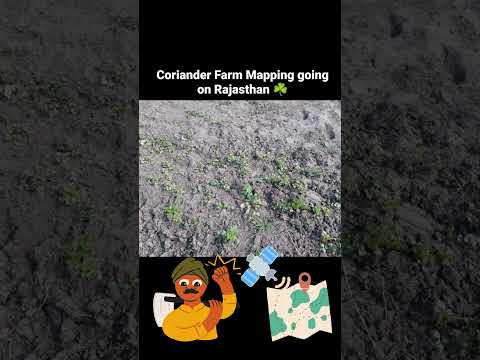Maximizing Canola Profits: Expert Guide to USDA Crop Insurance and Price Protection Strategies for Farmers
“The USDA’s Commodity Exchange Price Provisions (CEPP) for canola helps farmers manage risk across 100% of market fluctuations.”

In the ever-changing landscape of agriculture, we at Farmonaut understand the critical importance of crop insurance and commodity price protection for farmers, especially those cultivating canola. As experts in agricultural technology and risk management, we’re here to guide you through the intricacies of the USDA’s Commodity Exchange Price Provisions (CEPP) for canola and how these vital tools can safeguard your farming enterprise.
Understanding the CEPP Framework for Canola
The Commodity Exchange Price Provisions (CEPP) for canola is a cornerstone of agricultural risk management. This framework, established by the United States Department of Agriculture (USDA), provides a robust system for producers to navigate market fluctuations effectively. Let’s delve into how the CEPP benefits canola farming and contributes to overall agricultural market stability.
- Price Protection: CEPP offers a safety net against sudden price drops.
- Market Alignment: It aligns insurance payouts with actual market conditions.
- Risk Mitigation: Farmers can make informed decisions about crop sales and futures contracts.
By leveraging these provisions, canola producers can secure their financial future amid unpredictable economic conditions. The CEPP is just one piece of the puzzle in the USDA’s proactive approach to farm sustainability and financial resilience.
The Role of the Risk Management Agency (RMA)
The USDA’s Risk Management Agency plays a pivotal role in supporting farmers through various resources and tools. These include:
- Farm risk assessment tools: Comprehensive analytics to evaluate potential threats to your canola crop.
- Actuarial documents: Detailed information to help you understand the financial aspects of crop insurance.
- Policy bulletins: Regular updates on changes in insurance policies and provisions.
These resources are designed to empower farmers in making informed decisions about their risk management strategies. At Farmonaut, we recommend utilizing these tools in conjunction with our satellite-based farm management solutions for a holistic approach to agricultural risk management.
Crop Yield Insurance: A Vital Safety Net
Crop yield insurance is a fundamental component of risk management in canola farming. This type of insurance protects against yield losses due to various factors such as adverse weather conditions, pests, or diseases. Here’s why it’s crucial:
- Financial Security: It provides a safety net for farmers when yields fall below expected levels.
- Operational Stability: Allows for continued farm operations even in challenging years.
- Investment Protection: Safeguards the significant investments made in crop production.
Farmonaut’s satellite-based crop monitoring can complement crop yield insurance by providing real-time data on crop health, helping farmers make proactive decisions to mitigate risks before they impact yields.
Prevented Planting Policies: Protecting Against the Uncontrollable
Prevented planting policies are a critical aspect of farm insurance policies that protect farmers when they are unable to plant their intended crop due to extreme weather conditions or other insured perils. For canola farmers, this coverage can be a lifeline in years when spring flooding or excessive rainfall makes planting impossible.
- Coverage for Pre-planting Costs: Compensates for expenses incurred in preparation for planting.
- Flexibility in Decision-Making: Allows farmers to make sound agronomic decisions without financial pressure.
- Risk Mitigation: Provides a buffer against the unpredictability of weather patterns.
Understanding the nuances of prevented planting policies is crucial for maximizing their benefits. We recommend consulting with a risk management agent to tailor these policies to your specific farming operation.
Explore Farmonaut’s API for advanced agricultural data insights
Revenue Loss Protection: Securing Your Farm’s Financial Health
Revenue loss protection is an innovative insurance product that safeguards farmers against both yield losses and price declines. This comprehensive coverage is particularly valuable for canola farmers who face volatile market conditions. Here’s how it works:
- Dual Protection: Covers both production losses and price decreases.
- Guaranteed Revenue: Establishes a minimum revenue guarantee based on historical yields and projected prices.
- Market Flexibility: Allows farmers to take advantage of market opportunities without compromising insurance protection.
By combining revenue loss protection with Farmonaut’s advanced crop monitoring technology, farmers can make data-driven decisions to optimize both their crop management and risk mitigation strategies.

The Agricultural Commodity Exchange: A Tool for Price Stability
The agricultural commodity exchange plays a vital role in price discovery and risk management for canola farmers. By participating in futures and options markets, producers can:
- Lock in Prices: Secure favorable prices for their crop before harvest.
- Hedge Against Price Fluctuations: Protect against adverse price movements.
- Gain Market Insights: Access real-time market information to inform planting and selling decisions.
Farmonaut’s technology can provide valuable data to inform your commodity exchange strategies, helping you make more accurate predictions about your crop yield and quality.
Access Farmonaut’s API Developer Docs for integration into your farm management systems
Localized Insights: Regional Considerations for Canola Insurance
Crop insurance and price protection strategies can vary significantly across different regions. Here’s a brief overview of considerations for key canola-producing areas:
- Billings, MT: Focus on drought resistance and hail protection.
- Spokane, WA: Consider coverage for late spring frosts and irrigation failures.
- Topeka, KS: Emphasis on heat stress and pest management in insurance policies.
- St. Paul, MN: Prioritize coverage for excess moisture and early frost damage.
Farmonaut’s localized satellite data can provide crucial insights into regional weather patterns and crop conditions, helping farmers tailor their insurance strategies to their specific geographic risks.
“Canola farmers utilizing USDA crop insurance can protect up to 85% of their expected crop revenue against losses.”
Canola Crop Insurance Comparison Matrix
| Insurance Type | Coverage Level | Price Election | Risk Factors Covered | Potential Payout | Premium Cost | Eligibility Requirements | Additional Benefits |
|---|---|---|---|---|---|---|---|
| Yield Protection | 50-85% | Up to 100% of projected price | Yield loss | $100-$500 per acre | $10-$30 per acre | Production history required | Straightforward, covers production risks |
| Revenue Protection | 50-85% | 100% of projected price | Yield loss, price decline | $150-$600 per acre | $15-$40 per acre | Production history, price projections | Upside revenue potential |
| Area Yield Protection | 70-90% of county yield | 80-120% of price election | Area-wide yield loss | $50-$400 per acre | $5-$20 per acre | Based on county yields | Lower premiums, less paperwork |
| Whole-Farm Revenue Protection | 50-85% | Based on farm revenue | Revenue loss across all crops | Up to $8.5 million per year | Varies widely | 5 years of tax records | Covers diversified operations |
This comprehensive matrix provides a clear overview of the various insurance options available to canola farmers. By comparing these plans, producers can make informed decisions that best suit their individual risk management needs and farm operations.
Leveraging Technology for Enhanced Risk Management
In today’s digital age, technology plays a crucial role in enhancing risk management strategies for canola farmers. Farmonaut’s cutting-edge satellite-based farm management solutions offer several advantages:
- Real-time Crop Monitoring: Track crop health and development throughout the growing season.
- Precision Agriculture: Optimize resource usage and reduce waste through data-driven insights.
- Yield Prediction: Make more accurate yield estimates to inform insurance decisions.
- Weather Forecasting: Access localized weather data to anticipate and mitigate risks.
By integrating these technological tools with traditional insurance products, farmers can create a more robust and responsive risk management strategy.
Compliance and Reporting: Staying on Top of Requirements
Adhering to compliance requirements is essential for maintaining eligibility for USDA crop insurance programs. Key aspects include:
- Accurate Acreage Reporting: Precise documentation of planted acres.
- Timely Notice of Loss: Prompt reporting of potential crop damage or losses.
- Record Keeping: Maintaining detailed production and revenue records.
- Conservation Compliance: Adherence to conservation practices on highly erodible land and wetlands.
Farmonaut’s digital tools can streamline these reporting processes, ensuring accuracy and timeliness in your compliance efforts.
Future Trends in Agricultural Risk Management
As we look to the future, several trends are shaping the landscape of agricultural risk management:
- Climate-Smart Agriculture: Insurance products tailored to changing climate patterns.
- Data-Driven Policies: More personalized insurance options based on farm-specific data.
- Blockchain Integration: Enhanced traceability and transparency in insurance claims and payouts.
- Parametric Insurance: Instant payouts triggered by predefined events, reducing claim processing time.
Farmonaut is at the forefront of these innovations, continually developing new tools and technologies to support farmers in navigating these emerging trends.
Conclusion: Securing Your Canola Farm’s Future
In conclusion, mastering the intricacies of USDA crop insurance and price protection strategies is crucial for the long-term success and sustainability of canola farming operations. By leveraging the Commodity Exchange Price Provisions, understanding various insurance options, and integrating advanced technologies like those offered by Farmonaut, farmers can create a robust risk management framework.
Remember, the key to maximizing your canola profits lies in a balanced approach that combines traditional insurance products with innovative agricultural technologies. Stay informed, utilize available resources, and don’t hesitate to seek expert advice to tailor these strategies to your unique farming situation.
At Farmonaut, we’re committed to supporting your journey towards a more secure and profitable farming future. Explore our satellite-based solutions and see how they can complement your risk management strategies today.
Frequently Asked Questions (FAQ)
- What is the Commodity Exchange Price Provisions (CEPP) for canola?
The CEPP is a USDA framework that helps canola farmers manage risk by providing price protection against market fluctuations. - How does crop yield insurance work for canola farmers?
Crop yield insurance protects farmers against yield losses due to factors like adverse weather, pests, or diseases, providing financial compensation when yields fall below expected levels. - What are prevented planting policies?
These policies provide coverage when farmers are unable to plant their intended crop due to extreme weather conditions or other insured perils. - How can Farmonaut’s technology enhance risk management for canola farmers?
Farmonaut offers satellite-based farm management solutions that provide real-time crop monitoring, yield predictions, and weather forecasting, complementing traditional insurance strategies. - What is revenue loss protection, and how does it benefit canola farmers?
Revenue loss protection safeguards farmers against both yield losses and price declines, establishing a minimum revenue guarantee based on historical yields and projected prices.






